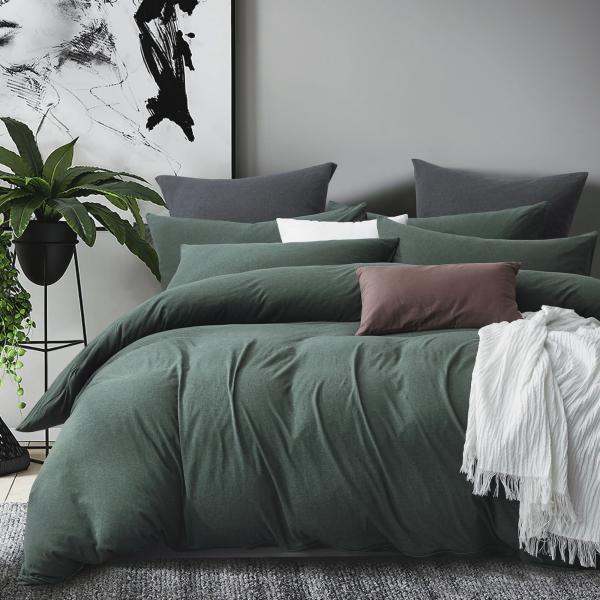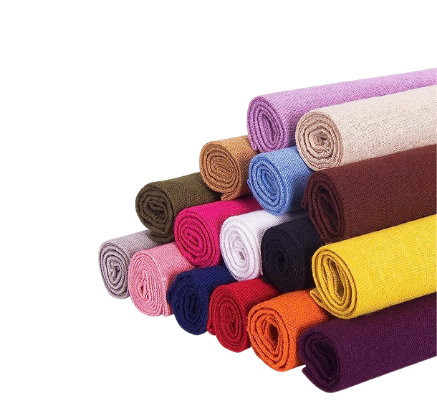Choosing the right quilt for your bed is essential for a comfortable and restful sleep. With so many options available, it can be overwhelming to decide which material is best suited for your needs. Microfiber quilt vs cotton quilt, which one is better? Two popular choices are microfiber and cotton quilts, each offering unique features and benefits. In this blog, we will explore the differences between microfiber and cotton quilts, considering factors such as breathability, durability, hypoallergenic properties, comfort, and care, to help you make an informed decision. So let’s dive in and see which is better: microfiber or cotton quilts.
Understanding Microfiber and Cotton Quilts
When it comes to understanding microfiber and cotton quilts, it’s important to note that microfiber quilts are crafted from thin synthetic fibers, whereas cotton quilts are made from natural fiber bedding. While microfiber quilts are favored for their lightweight and softness, cotton quilts are renowned for their breathability. It’s worth considering that microfiber quilts have the potential to trap heat, which can impact the quality of sleep, whereas cotton quilts offer superior breathability, making them ideal for hot sleepers. Additionally, cotton quilts are durable, easy to wash, and hypoallergenic, catering to individuals with sensitive skin. On the other hand, compared to cotton, microfiber quilts are less breathable and may not be the best choice for those prone to allergies.
What are Microfiber Quilts?
Microfiber quilts are made from synthetic material, specifically thin fibers of nylon polymers or polyester. These synthetic fibers make microfiber quilts durable and resistant to stains and wrinkles. The thin fibers in microfiber bedding contribute to its lightweight and soft feel, giving a comfortable sleeping experience. However, there are some drawbacks to microfiber quilts. Due to the synthetic nature of the material, microfiber quilts may trap heat and moisture, making them less breathable compared to cotton quilts. This can be a concern for hot sleepers who prefer a cooler sleep environment.

What are Cotton Quilts?
On the other hand, cotton quilts are made from natural fibers, namely cotton. Cotton bedding is known for its breathability, softness, and comfort. There are different types of cotton, such as Egyptian cotton, Pima cotton, and upland cotton, each having its own unique characteristics. Egyptian cotton, known for its long fibers, provides a luxurious feel and durability. Pima cotton, also known as Supima cotton, offers exceptional softness and durability. Upland cotton is the most popular choice, widely available, and offers good quality sleep experience. The natural fibers of cotton bedding make it highly breathable, allowing air to circulate and moisture to evaporate, resulting in a comfortable sleep, especially in hot weather.
Comparing the Breathability of Microfiber and Cotton Quilts
Microfiber quilts, being made of synthetic material, may trap heat and moisture, affecting breathability, unlike cotton quilts. While microfiber quilts are lightweight, they lack the exceptional breathability that cotton quilts offer, especially in hot weather. Cotton quilts, due to their natural fiber composition, provide excellent breathability, making them the best choice for a comfortable sleeping experience, particularly for hot sleepers. Additionally, cotton quilts, being machine washable, maintain their breathability over time, ensuring a comfortable sleep quality. The breathability of cotton quilts, compared to microfiber, makes them the right choice for individuals seeking luxury linens and a comfortable sleeping experience.
Breathability of Microfiber Quilts
Despite their lightweight construction, microfiber quilts may lack breathability, leading to discomfort for hot sleepers. The synthetic nature of microfiber quilts can hinder breathability by trapping heat and moisture, impacting the sleeping experience negatively. While durable, microfiber quilts may not provide the necessary breathability for a comfortable sleeping experience, unlike cotton quilts. The lack of breathability in microfiber quilts can lead to moisture retention, affecting overall comfort and sleep quality. Individuals seeking breathability and comfort should consider cotton quilts over microfiber quilts for a better sleep experience.
Breathability of Cotton Quilts
Cotton quilts, made from natural fibers, ensure excellent breathability, providing a comfortable and cool sleeping experience. This natural breathability makes them the best choice for individuals seeking a comfortable sleep, particularly in hot weather. The sateen weave of cotton quilts further enhances their breathability, making them the optimal bedding selection for a comfortable sleeping experience. Additionally, considering that cotton quilts are machine washable, they maintain their breathability, ensuring a comfortable sleeping experience over time. For those seeking lightweight and breathable bedding, cotton quilts are the ideal choice, especially when compared to microfiber quilts, which may not offer the same level of breathability.

Analyzing Durability: Microfiber vs Cotton Quilts
When it comes to durability, microfiber quilts are known for their ability to withstand frequent washes, making them a popular choice for bedding. The synthetic nature of microfiber, combined with its durable and stain-resistant properties, ensures a long-lasting and comfortable sleeping experience. On the other hand, cotton quilts, with their natural fibers, offer quality and comfort, making them a reliable choice for durability. The longevity of cotton quilts, especially when compared to microfiber, ensures a resilient and comfortable sleeping experience over time. Both microfiber and cotton quilts provide durable options for bedding, catering to individual needs and preferences.
Durability of Microfiber Quilts
Microfiber quilts, made from synthetic fibers, boast remarkable durability and stain resistance, making them ideal for enduring frequent washes. Their lightweight construction, combined with exceptional durability, ensures a long-lasting bedding option that maintains quality and comfort over extended use. Despite their thin fibers, microfiber quilts offer reliable, long-term bedding suitable for frequent washes, maintaining a comfortable sleeping experience. For individuals seeking resilient, stain-resistant bedding, microfiber quilts are a durable choice for a comfortable sleep.
Durability of Cotton Quilts
Cotton quilts, too, are known for their durability. The quality of the cotton used in the quilts plays a significant role in their durability. High-quality cotton bedding, such as Egyptian cotton or Pima cotton, is particularly renowned for its durability, ensuring that your quilt will last for years to come. Moreover, cotton is a natural resource, adding to the appeal of cotton quilts for those environmentally conscious individuals who prioritize sustainability. Durability, combined with natural resources, makes cotton quilts an excellent choice for those seeking long-term bedding options.

Hypoallergenic Properties: A Comparative Look
Cotton quilts, with their hypoallergenic properties, are the right choice for individuals seeking bedding that minimizes allergic reactions. The natural fiber composition of cotton quilts, making them hypoallergenic, ensures a comfortable sleeping experience for sensitive sleepers. Compared to microfiber, cotton quilts promote better sleep quality for individuals prone to allergies. Offering a comfortable sleeping experience, cotton quilts are the best bedding choice for individuals with allergies or sensitive skin. On the other hand, microfiber quilts may not offer the hypoallergenic properties required for individuals with allergies or sensitive skin, making cotton quilts the better choice for those with allergic reactions.
Hypoallergenic Properties of Microfiber Quilts
Ideal for sensitive skin, microfiber quilts are hypoallergenic, resistant to allergic reactions, and a popular choice for those with allergies. The thin fibers of microfiber material make it difficult for dust mites to thrive, ensuring a comfortable sleeping experience by trapping heat. The synthetic material of microfiber quilts adds to their hypoallergenic properties, making them suitable for individuals with allergies. With their ability to provide a comfortable sleeping experience and resistance to allergic reactions, microfiber quilts are an excellent choice for individuals with sensitive skin or allergies.
Hypoallergenic Properties of Cotton Quilts
Cotton quilts, derived from natural fibers, offer hypoallergenic properties that are gentle on the skin, ideal for individuals with sensitive skin or allergies. The breathability of cotton quilts prevents moisture buildup, reducing the risk of allergic reactions and ensuring a comfortable sleeping experience. Thanks to the natural fiber composition, cotton quilts are a better choice for individuals with allergy concerns. Additionally, high-quality cotton quilts, being durable and machine washable, provide a practical solution for those seeking bedding that caters to their individual needs for comfortable sleep. With cotton quilts, individuals can enjoy luxury bedding that is both hypoallergenic and renewable, making it the best bedding choice for those with allergies and sensitive skin.
Comfort Level: Microfiber Quilts vs Cotton Quilts
Microfiber quilts offer a comfortable sleeping experience with their lightweight and breathable nature, making them ideal for hot sleepers. Their softness and durability further contribute to a restful sleep. On the other hand, cotton quilts provide comfort and breathability, offering a luxurious and comfortable sleeping experience, especially with the sateen weave. Both microfiber and cotton quilts cater to individual needs and personal preference, ensuring a comfortable sleeping experience tailored to specific requirements. Choosing between the two comes down to personal preference and the desired level of comfort, as both materials offer quality sleep and are suitable for different sleepers’ needs.
Comfort Provided by Microfiber Quilts
Microfiber quilts offer a comfortable sleeping experience, thanks to their lightweight and soft texture. Their breathability makes them especially suitable for hot sleepers, ensuring a pleasant sleep even in warm weather. Additionally, the durability and hypoallergenic properties of microfiber quilts contribute to a comfortable sleep, making them an ideal choice for individuals with sensitive skin or allergies. The softness of microfiber quilts ensures a cozy and comfortable sleeping experience for all sleepers, catering to individual needs and personal preference. Furthermore, being machine washable, they provide convenience and maintain the quality of the bedding, offering a comfortable sleeping experience over time.
Comfort Provided by Cotton Quilts
Cotton quilts, with their natural fibers, offer exceptional comfort. The breathability of cotton allows for a comfortable sleep, as the fabric absorbs moisture and promotes air circulation. Additionally, cotton quilts often have a soft and luxurious feel, especially those with a sateen weave or a high thread count, enhancing the overall comfort of your sleep experience. If comfort is your top priority, cotton quilts are the better choice, providing a cozy and restful sleep night after night.

Caring for Your Quilts: Microfiber and Cotton
Caring for microfiber and cotton quilts involves washing in a gentle cycle to maintain their durability, breathability, and hypoallergenic properties. Microfiber quilts, made of synthetic fibers, offer durability, allowing frequent washes without compromising quality. When caring for microfiber quilts, machine washability, durability, and breathability should be considered, ensuring a comfortable sleeping experience. On the other hand, caring for cotton quilts also requires gentle washing to preserve their lightweight and hypoallergenic features, providing a comfortable sleeping experience, especially in hot weather. Both microfiber and cotton quilts offer a comfortable sleeping experience and are suitable for machine washes, catering to personal preference.
How to Care for Microfiber Quilts?
Microfiber quilts are often machine washable, making them easy to care for. It is recommended to wash them in a gentle cycle to preserve their quality. Additionally, microfiber is resistant to stains, making it ideal for those who frequently encounter spills or accidents. However, it’s important to note that certain stains may require specific treatment or stain removers, so always refer to the manufacturer’s care instructions.
How to Care for Cotton Quilts?
Cotton quilts, too, are generally machine washable, allowing for easy care and maintenance. It is recommended to wash cotton quilts in a gentle cycle to prevent any damage to the fabric. Consider using mild detergent specifically designed for luxury linens or cotton bedding. It’s best to air dry or tumble dry on low heat to avoid shrinking or wrinkling. Proper care, including regular washing and gentle handling, will ensure that cotton quilts maintain their softness, comfort, and durability throughout the years.
Factors to Consider when Choosing Between Microfiber and Cotton Quilts
When it comes to choosing between microfiber and cotton quilts, several factors come into play. Ultimately, the right choice depends on personal preference, the type of fabric you desire, and what best fits your needs.
Both microfiber and cotton quilts have their pros and cons, and understanding these differences will help you make the best choice for your bedding. Microfiber quilts excel in durability, stain resistance, and affordability, making them a popular choice, especially for frequent washes. On the other hand, cotton quilts offer breathability, hypoallergenic properties, and comfort, catering to individual needs.
If you prioritize eco-consciousness, organic cotton quilts made from renewable resources may be the best choice for you. Consider the type of cotton, such as Egyptian cotton or Pima cotton, that offers the desired qualities of softness, durability, and luxury bedding experience.
Ultimately, the best choice between microfiber and cotton quilts depends on your individual needs, sleep preferences, and priorities. If breathability, hypoallergenic properties, and natural fibers are of utmost importance, cotton quilts provide the best fit. However, if durability, stain resistance, and affordability are your priority, microfiber quilts may be the better choice for your bedding needs.
Conclusion
In conclusion, both microfiber and cotton quilts have their own unique qualities and benefits. Microfiber quilts are known for their breathability and durability, while cotton quilts are praised for their hypoallergenic properties and comfort. When choosing between the two, it’s important to consider factors such as breathability, durability, hypoallergenic properties, and comfort level to find the quilt that best suits your needs and preferences. Additionally, proper care and maintenance are essential to prolong the lifespan of your quilts, regardless of the material. Ultimately, the choice between microfiber and cotton quilts depends on your personal preferences and requirements. So take your time and make an informed decision to ensure that you have a cozy and comfortable sleep experience.

